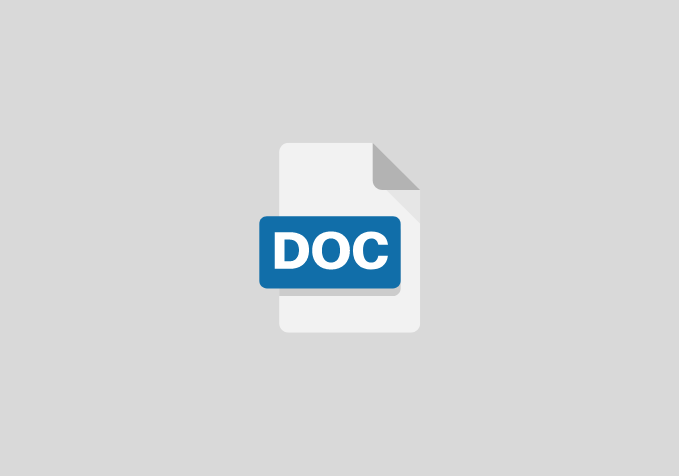Examination of the Effect of Industrial Relation Practice on Organizational Productivity in the Public Sector
CHAPTTER ONE
OBJECTIVES OF THE STUDY
The objectives of the study are as follows:
- To prevent and settle trade dispute between employers and trade union in order to achieve greater productivity in the organization.
- To help and maintain the machinery of joint consultation between management and union.
- To keep in close touch with state, employer and employee relations.
- To advise the organization (i.e. ministry of finance, Abuja) or the government on industrial relation problem.
CHAPTER TWO
LITERATURE REVIEW
HISTORICAL OVERVIEW
By the 20th century in Nigeria, the system of production was purely traditional and payment for labour service were in kind, as the issue for monetary payment was not popular in the economy because there were no employment of labour, no payment of wage hence no organized labour to fight for interest of workers except that food and shelter were provided for the dependents by the head of the family units for the satisfaction of the basic needs.
During the 20th century with the ushering in of the commercial activities pursued by the colonial maters who needed the service of labourers for the raw materials they could find. Again, the colonial civil service starts employing indigenous workers, thereby increasing the culture of wages payment in Nigeria. Workers were recruited into organization like the post and telecommunication (P&T) Electrical cooperation of Nigeria (ECN) and other government agencies then come the laying of the railway line from Lagos to the northern Nigeria, with the attendant employment of Nigeria leading to the payment of wages. The increase in commercial activities and workers agitation led to the establishment of Nigeria civil service union (NCSU) in 1912 to fight for the better condition of service of civil servants of Nigeria.
CHAPTER THREE
RESEARCH METHODOLOGY
INTRODUCTION
This chapter deals with the procedure used by the researcher to conduct the study. It contains the different activities performed and method employed by the researcher in the study.
CHAPTER FOUR
DATA ANALYSIS AND DISCUSSION OF FINDINGS
DATA PRESENTATION AND TABULATION
For an easy understanding and assimilation of responses of the employees of the organization, an analysis of the information obtained is presented below.
To enable accuracy, efficiency and clarity a tabular presentation of responses shall be made. This is important because it gives a clearer presentation of analysis of the data obtained.
CHAPTER FIVE
SUMMARY, CONCLUSION AND RECOMMENDATION
SUMMARY OF THE STUDY
This Study is divided into (5) main areas. In the first and second chapters, attempt were made to establish the theoretical basis of the study. i.e. the reason why the researcher is carrying out this study was stated in chapter one.
Several literatures were reviewed in chapter two and this helped the researcher to discover that industrial relation practice is a vital tool used in improving organizational productivity in the organization because workers in the organization rely heavily on how industrial relations practice work in the organization with employers of labour and government and agencies. Consequently, industrial relation is said to be effective when the employer of labour and the workers and their union and government and the numerous agencies see the need of settling organizational dispute through collective bargaining and negotiation.
Secondly, it helps to settle and solve conflict and disputes in the organization also enhance productivity. Hence, industrial relation could be said to be the life wire of an organization. It was discovered that industrial relation practices have a significance effect in the improvement of organization productivity in the organization, if it is well implemented, executed and adopted.
CONCLUSION
In this research work, industrial relation practice aimed at solving problems between the employer of labour, (government) workers and the union and it numerous agencies. Therefore, federal ministry of finance Abuja needs effective industrial relation practice in order to attain to the organizational performance, the relationship between labour and management should be guided by the democratic principle or theory.
RECOMMENDATION
Industrial elation is the inter-twining activities of the workers management and government for better working conditions. To improve organizational relation practice, government should in cooperate organization productivity. organization productivity here point out clearly the extent at which every organization carry out its function and responsibilities as regard to improving its responsibilities using the available resources.
BIBLIOGRAPHY
- Akpala, A. (1982), Industrial Relations Model for Developing countries: The Nigeria system, Enugu fourth Dimension press.
- Burton, J. (1990), conflict resolution and (London Macmillan)
- Charles, H. (1990), The age of unreason Harvard Business School Press, Boston Massachusetts.
- Christopher, A. et al (1994) Changing the Role of Top Management: Beyond Strategy to Purpose.
- Edward, H.L. (1992), Trust and the Flexible Firm, Industrial Relations: University of California
- Freeman et al (1999) what workers want? Ulhaca, N.Y Cornell University Press.
- Gaya Best, S. (2006) Introduction to Peace and Conflict Studies in west Africa.
- Jeong, H. (2000) Peace and conflict studies: An introduction (Aldershotl Ashgate)


